Nice to meet you, I’m Tetsuta, a guitarist.
This time my friend Kawanishi-san from Sound House who has helped me out for a long time, gave me the opportunity to review some equipment!
I have only hoped to be given the opportunity to write product reviews, so I’m going to introduce two pedals from Warm Audio: the ODD, an overdrive distortion pedal, and the Mutation Phasor II, a phaser pedal.
I hope you will enjoy my review and read it to the end!
Now, let’s take a look at how these two pedals look.
ODD Box v1
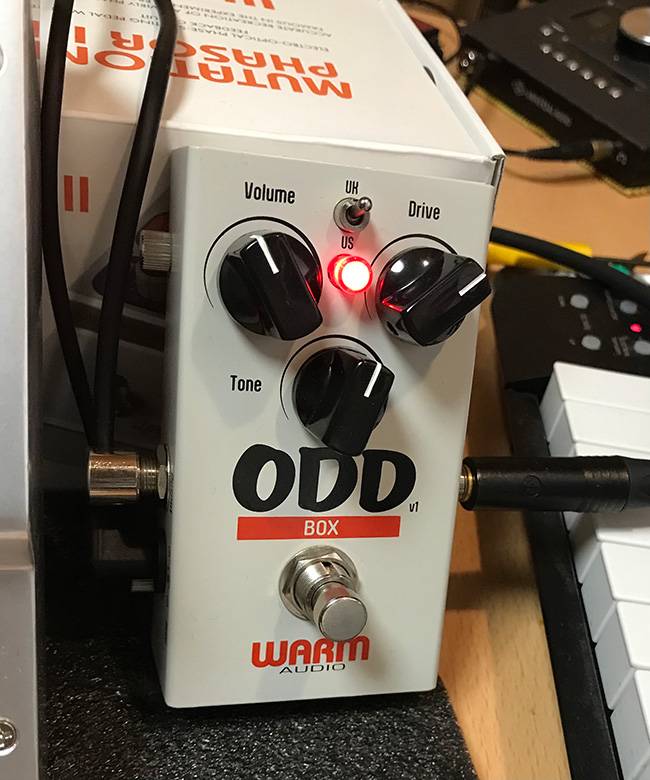
As you can see at a glance, the ODD is a clone pedal of the OCD, one of the most popular pedals from the pioneer of boutique pedals, Fulltone. The fairly heavy weight at 386g and the screws on the side of the casing are the same as the original OCD. You can feel the respect that Warm Audio has for the original OCD.
The orange color is not used on the original, but it is a nice accent on the ODD!
Controls are the same as the original; Volume, Drive, and Tone, and the toggle switch for UK/US seems to correspond to the original HP/LP respectively.
Mutation Phasor II
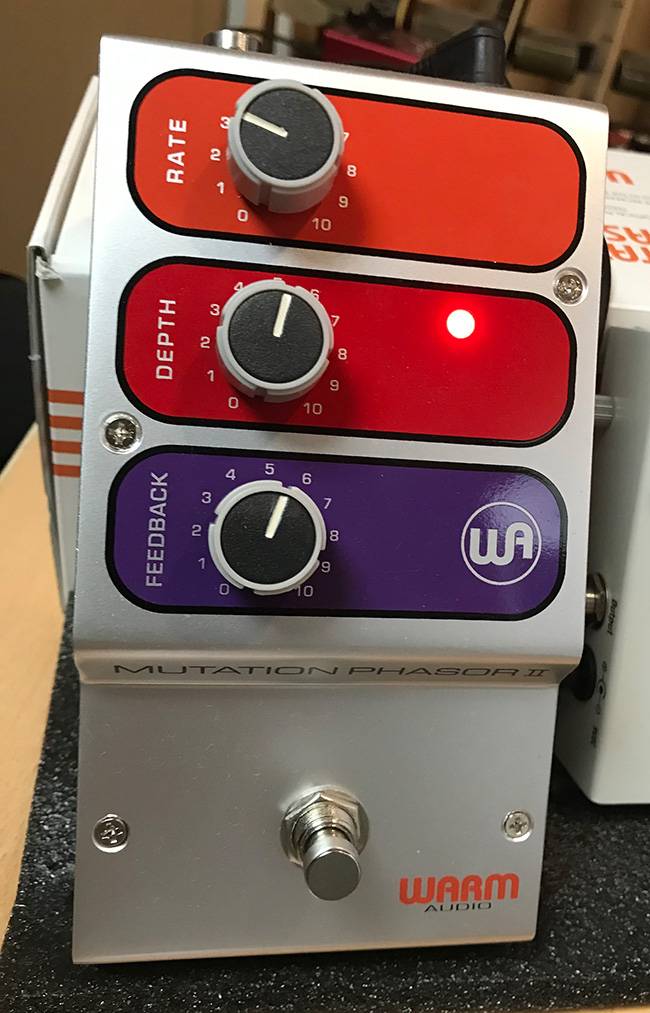
This is a more compact and modern version of the distinctive design of the 70’s vintage pedal Mu-Tron Phasor II. Most of the original design was retained, except for the original AC power supply and power on/off switch have been eliminated and a 9VDC power jack has been installed. It has the same staircase-shaped housing as the original with orange, red, and purple coloring with perfect reproduced font. The size has become more compact, which is a nice pedalboard-friendly change.
Both pedals have the essence and charm of the original design.
The sound doesn’t sound cheap like other super cheap clone pedals out there (I actually like those), but instead, it feels very high class. Warm Audio’s attention to detail is on point.
Now, let’s quickly listen to the sound.
In the demo song, the effects are used differently:
- ODD is turned on only
- Mutation Phasor II is turned on only
- Both are turned on
*Check the LEDs on each pedal to see which pedal(s) are turned on.
The intro section looks a bit busy with the screen switching, but I think you can get some idea about the sound.
[Product Review] Warm Audio/Mutation Phasor II & ODD Box v1 - Sound Demo by Tetsuta Otachi
Continuing on, next we’re going to explore the effects of each control.
ODD Box v1
[Product Review] Warm Audio/ODD Box v1 -Arpeggio/Muting by Tetsuta Otachi
・Arpeggio Bypass - Boost - Crunch (US Mode)
The video starts with the Drive turned up slightly, but it also worked well as a complete clean booster.
The Tone is also effective, so it is easy to match it with other drive pedals depending on the setting. When used in clean mode, the tone can be made to sound like a bypass sound, but the sound is slightly more cohesive and more pleasant to listen to.
When the Drive is turned up to about 12 o’clock, the sound becomes pleasantly saturated. Chords can also be played through beautifully.
・Muting Crunch (US Mode)
The crunch sound is well-defined and punchy, and retains the original sound while also rounding out the range. It also adds compression slightly, making it a good match for muting. I think this sound is also perfect for muting that uses a wah pedal.
[Product Review] Warm Audio/ODD Box v1 - Power Chord by Tetsuta Otachi
・Power Chord Overdrive - Distortion (US Mode to UK Mode)
A single coil guitar with the Drive knob at about 1 o’clock to 2 o’clock positions increases the distortion sound a lot.
In the middle of the video, I switched from US mode to UK mode and the distortion, volume, and high frequency range increased in UK mode.
According to a source, US mode is a Fender type and UK mode is a Marshall type, and that is the impression I actually got.
[Product Review] Warm Audio/ODD Box v1 - Lead Guitar - by Tetsuta Otachi
・Lead Overdrive - Distortion (UK Mode)
While I was recording the lead sound, I added a slight delay to simulate an actual solo playing situation. I used it around 12 to 2 o’clock on the Drive. The sound is thick, but still retains the feel of the original sound and expresses the strength and weakness of the picking well.
Mutation Phasor II
While playing an arpeggio phrase, play each control and observe its effect.
The roles of each control are summarized below.
- Rate: Controls the speed of the wobble
- Depth: Controls the depth of modulation
- Feedback: Controls the amount of effect signal that is fed back
[Product Review] Warm Audio/Mutation Phasor II - Control by Tetsuta Otachi
Personally, I feel that the Rate knob is the key to creating a good sound. It can be used to create a more natural sound on the low end or a gimmicky sound on the high end. I feel that it is easier to create the desired sound by determining the direction of the sound with Depth and Feedback, then determine the intensity of the effect with Rate. You can create a huge variety of sounds, from orthodox phaser sounds to sounds with filter-like nuances like auto-wah and vocoder.
Below are some recommended settings.
[Recommended Setting No. 1] For funky muting
[Recommended Setting No. 2] For psychedelic special effects and gimmicks
[Recommended Setting No. 3] For mellow 70’s R&B
How was it?
Let me summarize my impressions of both pedals at the end.
ODD Box v1
The ODD, which is set to a light crunch sound in US mode, can stay turned on all the time and used as the basis for sound creation, or it can be used in UK mode with the Drive turned up to play leads with all your might which also are very pleasing to the ears. The thickness of the sound is one of the reasons why the original has been so popular for so many years. It is also a great clean booster, and its wide range of applications, from clean to overdrive to distortion, makes it a truly reliable instrument to have!
Mutation Phasor II
This pedal is a treasure chest of nostalgic 70’s sounds.
Set the Rate, Depth, and Feedback to 9 o’clock or just set the Depth to 12 o’clock for a natural phaser, or you can increase the Rate a bit for a modulated tremolo.
Then, if you increase the Rate further to shorten the modulation cycle, you can create a strong psychedelic atmosphere. If you turn up the Feedback even more, you can add an auto-wah or vocoder-like filter sound for funky riffs. There are probably many more uses than I even know about! This would be an interesting toy for keyboardists to use!
Both pedals produce high quality vintage tones and have a wide range of sound creation, and they look so beautiful. I really appreciate that pedals of this quality are available at a reasonable price range. Warm Audio’s pedals are definitely worth paying attention to!
With that, I would like to conclude my first ever equipment review. It was a lot of fun! Thank you very much to all of you who have taken the time to read my awkward review!!
コラム「sound&person」は、皆様からの投稿によって成り立っています。
投稿についての詳細はこちら






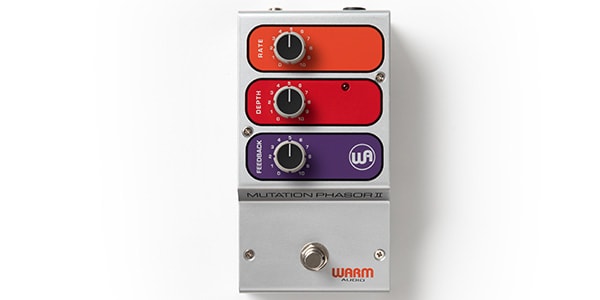
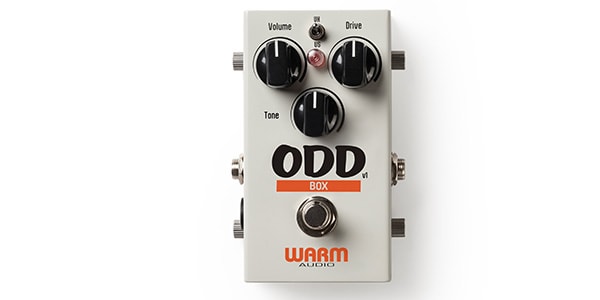





![[Product Review] Warm Audio ODD Box v1 by YamashiRoll](/contents/uploads/thumbs/5/2023/9/20230906_5_23881_1.jpg)
![[Product Review] Warm Audio WA-47 Condenser Microphone by Kensuke Kasuya](/contents/uploads/thumbs/5/2023/8/20230831_5_23809_1.jpg)
![[Product Review] “I tried out products by Warm Audio!” by Hiro-a-key a.k.a. Nenashi](/contents/uploads/thumbs/5/2023/8/20230821_5_23673_1.jpg)
![[Product Review] Warm Audio WA-84 Stereo Pair Nickel Condenser Microphone Set by Yushi Otsuka](/contents/uploads/thumbs/5/2023/8/20230815_5_23607_1.jpg)
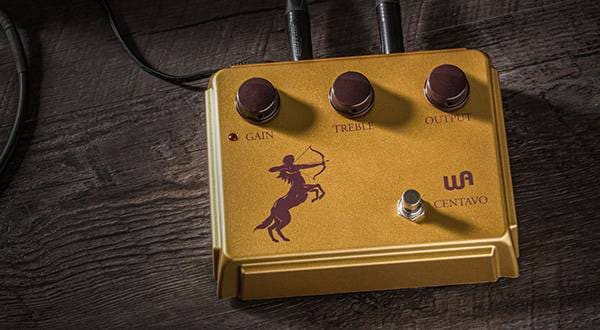
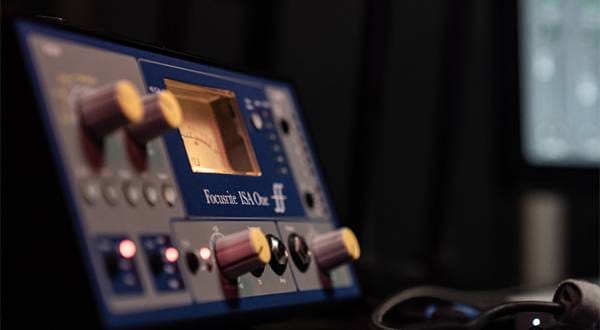
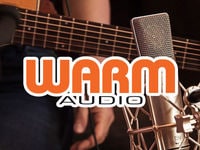 WARM AUDIOとは
WARM AUDIOとは
 【初心者向け】エフェクター講座
【初心者向け】エフェクター講座
 あなたのエフェクターボード見せてください
あなたのエフェクターボード見せてください
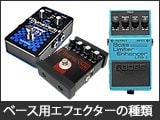 ベース用エフェクターの種類
ベース用エフェクターの種類
 エフェクターのつなぎ方
エフェクターのつなぎ方
 エフェクターの種類
エフェクターの種類















